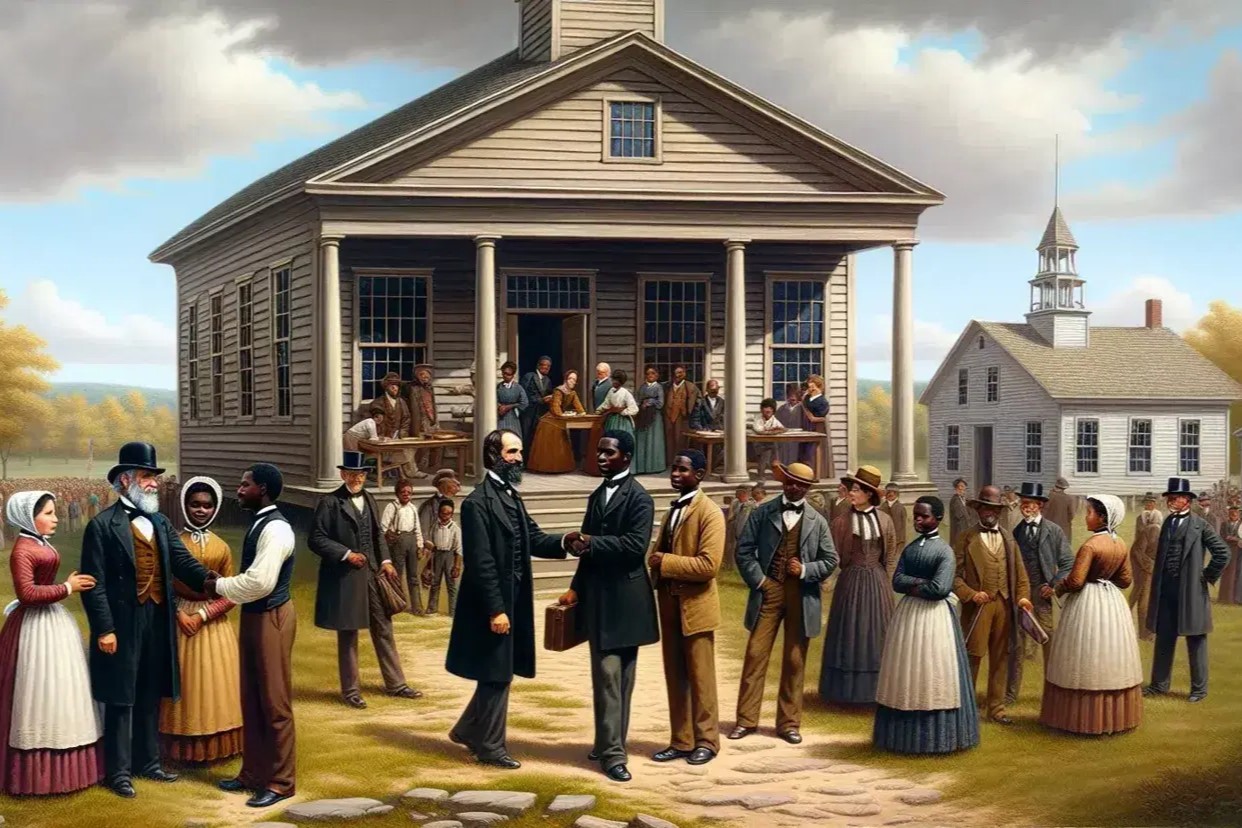
What was the Reconstruction Era? The Reconstruction Era was a pivotal period in American history, spanning from 1865 to 1877, right after the Civil War. During this time, the United States grappled with reintegrating the Southern states back into the Union and addressing the complex issues of newly freed African Americans. Reconstruction aimed to rebuild the South's economy, establish new state governments, and enforce civil rights. However, it faced significant challenges, including resistance from Southern whites, political conflicts, and economic hardships. This era laid the groundwork for future civil rights movements and left a lasting impact on American society.
Key Takeaways:
- The Reconstruction Era, from 1865 to 1877, aimed to rebuild the South and integrate formerly enslaved people. It led to significant social, economic, and political changes in American history.
- Influential figures like Thaddeus Stevens and Ulysses S. Grant played crucial roles during the Reconstruction Era, shaping the course of American history and laying the groundwork for future civil rights movements.
The Reconstruction Era: An Overview
The Reconstruction Era was a pivotal period in American history, spanning from 1865 to 1877. This era followed the end of the Civil War and aimed to rebuild the Southern states while integrating formerly enslaved people into society. Here are some fascinating facts about this transformative time.
- The Reconstruction Era began immediately after the Civil War ended in 1865.
- President Abraham Lincoln initiated the first steps of Reconstruction before his assassination.
- Andrew Johnson, Lincoln's successor, continued Reconstruction but faced significant opposition.
- The 13th Amendment, abolishing slavery, was ratified in December 1865.
- The Freedmen's Bureau was established in 1865 to help formerly enslaved people transition to freedom.
- The Civil Rights Act of 1866 granted citizenship to all persons born in the United States, except Native Americans.
- The 14th Amendment, guaranteeing equal protection under the law, was ratified in 1868.
- The Reconstruction Acts of 1867 divided the South into five military districts to enforce new laws.
- The 15th Amendment, granting African American men the right to vote, was ratified in 1870.
- The Ku Klux Klan, a white supremacist group, was founded in 1866 to oppose Reconstruction efforts.
Key Figures of the Reconstruction Era
Several influential figures played crucial roles during the Reconstruction Era. Their actions and decisions significantly impacted the course of American history.
- Thaddeus Stevens, a Radical Republican, advocated for harsh penalties on the South and equal rights for African Americans.
- Ulysses S. Grant, a former Union general, became president in 1869 and supported Reconstruction policies.
- Hiram Revels became the first African American U.S. Senator in 1870.
- Frederick Douglass, a former enslaved person, became a prominent advocate for civil rights during Reconstruction.
- Blanche K. Bruce was the first African American to serve a full term in the U.S. Senate, starting in 1875.
- Robert Smalls, an African American war hero, was elected to the U.S. House of Representatives in 1874.
- Andrew Johnson faced impeachment in 1868 due to his opposition to Radical Republican policies.
- Rutherford B. Hayes ended Reconstruction in 1877 as part of the Compromise of 1877.
- Charles Sumner, a Radical Republican senator, pushed for civil rights legislation.
- John R. Lynch, an African American politician, served in the U.S. House of Representatives during Reconstruction.
Social and Economic Changes
The Reconstruction Era brought significant social and economic changes to the United States, particularly in the South.
- Sharecropping became a common practice, where formerly enslaved people worked land owned by others in exchange for a share of the crops.
- The Southern economy struggled to rebuild after the devastation of the Civil War.
- Public education systems were established in the South for the first time.
- African American communities began to form their own churches, schools, and social organizations.
- Black Codes were laws passed by Southern states to restrict the freedom of African Americans.
- The Enforcement Acts of 1870 and 1871 aimed to protect African Americans' voting rights and curb Klan violence.
- The Panic of 1873, a severe economic depression, affected the entire nation and slowed Reconstruction efforts.
- Carpetbaggers were Northerners who moved to the South during Reconstruction, often seeking economic opportunities.
- Scalawags were Southern whites who supported Reconstruction and the Republican Party.
- The Southern Homestead Act of 1866 provided land to formerly enslaved people and poor whites.
The End of Reconstruction
The end of the Reconstruction Era marked a significant shift in American history, leading to new challenges and changes.
- The Compromise of 1877 resulted in Rutherford B. Hayes becoming president and the withdrawal of federal troops from the South.
- The end of Reconstruction led to the rise of Jim Crow laws, enforcing racial segregation in the South.
- Many African Americans faced disenfranchisement through poll taxes, literacy tests, and other discriminatory practices.
- The Supreme Court's decision in Plessy v. Ferguson (1896) upheld the constitutionality of racial segregation.
- Despite the challenges, the Reconstruction Era laid the groundwork for future civil rights movements.
The Lasting Impact of the Reconstruction Era
The Reconstruction Era left a significant mark on American history. It reshaped the South, brought about constitutional amendments, and laid the groundwork for civil rights movements. Despite its challenges, this period saw the 13th, 14th, and 15th Amendments come to life, abolishing slavery, granting citizenship, and protecting voting rights for African Americans.
However, Reconstruction also faced resistance, leading to the rise of Jim Crow laws and segregation. The era's end didn't mean the end of the struggle for equality. The fight for civil rights continued well into the 20th century, influenced by the groundwork laid during Reconstruction.
Understanding this era helps us grasp the complexities of American history and the ongoing journey toward equality. The Reconstruction Era serves as a reminder of both progress and the work still needed to achieve true equality.
Frequently Asked Questions
Was this page helpful?
Our commitment to delivering trustworthy and engaging content is at the heart of what we do. Each fact on our site is contributed by real users like you, bringing a wealth of diverse insights and information. To ensure the highest standards of accuracy and reliability, our dedicated editors meticulously review each submission. This process guarantees that the facts we share are not only fascinating but also credible. Trust in our commitment to quality and authenticity as you explore and learn with us.


